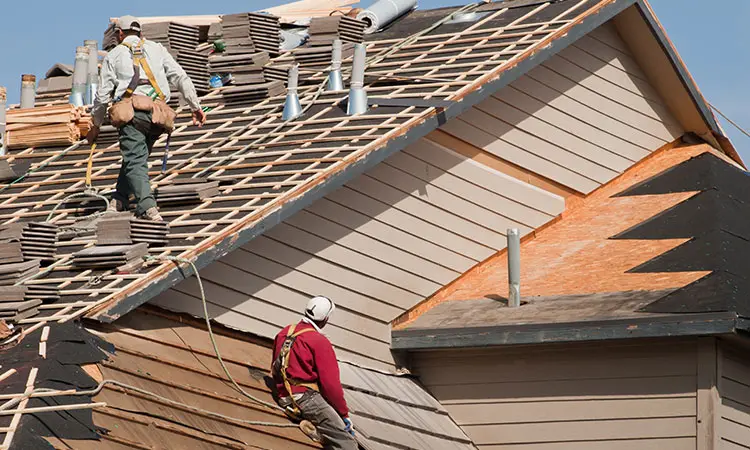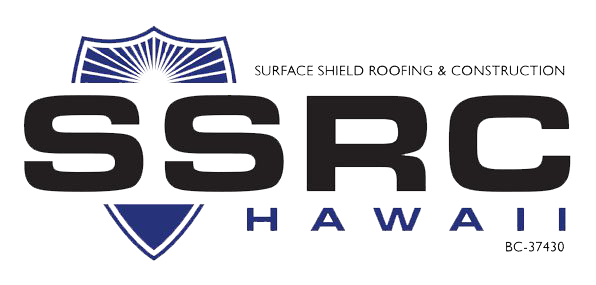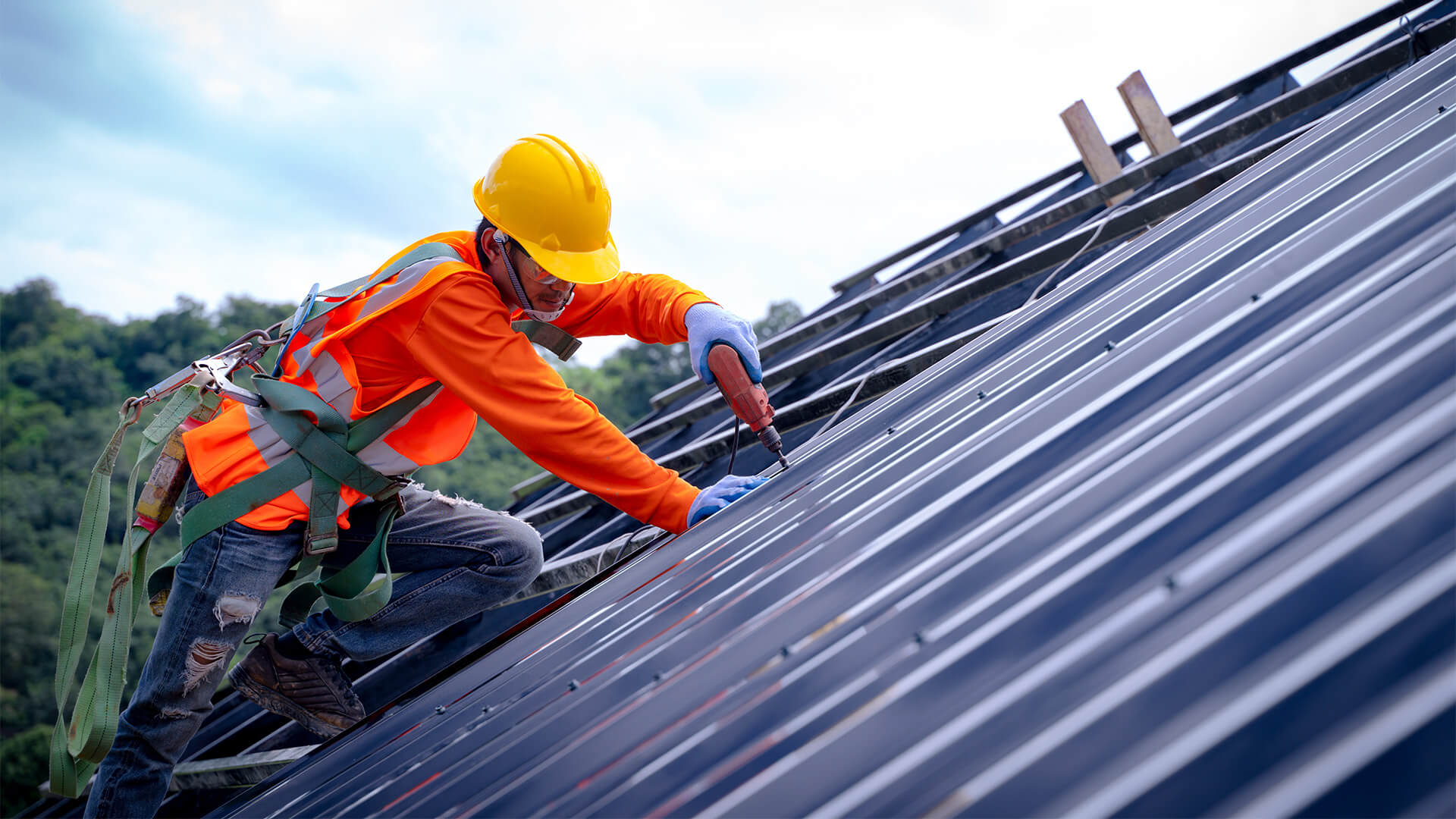Recognizing the Different Kinds Of Roof Coverings: A Comprehensive Overview for Homeowners
In the world of homeownership, picking the proper roofing design is a choice that lugs considerable implications for both performance and visual charm. With an array of alternatives-- varying from the standard gable to the contemporary level-- each type presents unique benefits and obstacles that should line up with the property owner's certain requirements and environmental factors to consider. Comprehending these distinctions not only help in making an educated option yet additionally affects long-lasting maintenance and power effectiveness. As we discover the ins and outs of different roof types, it comes to be noticeable that dimension does not fit all; the ideal choice might stun you.
Gable Roof Coverings
Gable roof coverings, identified by their triangular shape, are amongst the most popular roof designs because of their simpleness and efficiency in dropping water and snow. This layout features two sloping sides that fulfill at a ridge, permitting effective water drainage and decreasing the risk of water build-up. The steep pitch commonly connected with saddleback roofs improves their ability to take care of hefty precipitation, making them suitable for numerous environments.
In addition to their sensible advantages, saddleback roofs supply aesthetic versatility. They can be adapted to different building designs, from conventional to modern-day homes. The layout can also fit extra features such as dormer home windows, which boost all-natural light and ventilation in the attic area.
Moreover, gable roofs provide ample room for insulation, contributing to energy efficiency. Homeowners can select from a range of roof covering products, including asphalt tiles, metal, and ceramic tiles, additionally improving personalization choices.
In spite of their advantages, gable roofing systems might call for extra support in locations vulnerable to high winds or heavy snowfall. In general, the saddleback roof remains a preferred choice because of its blend of capability, sturdiness, and visual appeal.
Apartment Roofs
Level roofing systems are frequently identified for their minimalist design and sensible applications, especially in industrial and business settings (oahu roofing). These roofs feature a virtually straight or horizontal surface, which enables easy construction and functional space utilization. While they might lack the aesthetic appeal of pitched roofings, level roofings provide various advantages, especially in city environments where optimizing area is vital
Among the key benefits of flat roof coverings is their ease of access. House owners can utilize the roofing area for different purposes, such as rooftop gardens, terraces, or photovoltaic panel installations. Additionally, flat roofing systems are generally a lot more cost-efficient to install and keep contrasted to their sloped counterparts, as they call for less products and labor.
Usual products used for flat roofs include built-up roofing (BUR), modified bitumen, and single-ply membrane layers, each offering distinct advantages. In general, flat roofing systems serve as a versatile and practical selection for numerous property owners and businesses alike.
Hip Roofs
Hip roof coverings are characterized by their sloped sides that converge at the top, developing a ridge. This style is distinctive from saddleback roofs, as all four sides of a hip roof covering incline downwards towards the wall surfaces, supplying a more stable framework. The angle of the slopes can differ, permitting flexibility in building aesthetics and functionality.
One of the primary benefits of hip roofing systems is their capacity to withstand hefty winds and negative weather. The sloped surfaces allow far better water drain, reducing the risk of leakages and water damages. Furthermore, hip roofing systems provide boosted attic room, which can be made use of for storage or perhaps exchanged livable areas.
Nevertheless, creating a hip roof can be much more pricey and complex than simpler roof covering types, such as gable roofings. The additional product and labor associated with creating the inclines and guaranteeing proper structural honesty can lead to higher expenditures. In spite of these downsides, many property owners favor hip roofings for find out their durability, visual charm, and possibility for power performance.
Mansard Roofings
Mansard roofing systems, typically acknowledged by their special four-sided style, feature 2 slopes on each side, with the lower slope being steeper than the upper. This architectural style, stemming from France in the 17th century, is not just aesthetically appealing however useful, as it takes full advantage of the usable space in the top floorings of a building. The high reduced incline allows for more headroom, making it an optimal option for attic rooms or loft spaces, which can be transformed into living spaces.
Mansard roof coverings are identified by their convenience, accommodating different building designs, from traditional to modern-day. They can be built with various materials, including asphalt tiles, slate, or metal, giving house owners with an array of choices to match their budgets and preferences. Furthermore, the design enables the combination of dormer home windows, improving natural light and air flow in the top degrees.
Nevertheless, it is vital to think about the prospective disadvantages. browse around here Mansard roof coverings might require even more upkeep due to the intricacy of their design, and their high slopes can be challenging for snow and rain runoff. On the whole, mansard roofing systems integrate beauty with practicality, making them a popular option amongst home owners seeking distinct building features.
Shed Roofings
As house owners progressively look for simplicity and functionality in their architectural styles, lost roofings have actually become a prominent selection. Characterized by a solitary sloping plane, a shed roofing system offers a minimal visual that enhances different home styles, from contemporary to rustic.
One of the primary advantages of a shed roofing is its uncomplicated building, which typically equates to decrease labor and product expenses. This design enables reliable water drain, lowering the danger of leaks and water damage. Additionally, the upright slope offers adequate space for skylights, boosting all-natural light within the inside.
Shed roofing systems likewise provide adaptability in terms of use. They can be effectively incorporated into additions, garages, or outdoor frameworks like pavilions and sheds. Moreover, this roof covering style can accommodate numerous roof products, consisting of steel, asphalt shingles, or perhaps environment-friendly roofs, straightening with green efforts.
However, it is important to take into consideration regional environment conditions, as heavy snow tons might necessitate changes to the roof's angle or structure. Overall, lost roofs offer a sensible and cosmetically pleasing alternative for house owners seeking to maximize capability without endangering style.
Conclusion


Gable roofing systems, defined by their triangular form, are amongst the most popular roof designs due to their simpleness and effectiveness in shedding water and snow. oahu roofing. The steep pitch generally linked company website with gable roofs enhances their capability to take care of heavy precipitation, making them suitable for various climates
While they may lack the visual appeal of pitched roofs, flat roofings provide countless benefits, especially in urban environments where making best use of space is essential.
